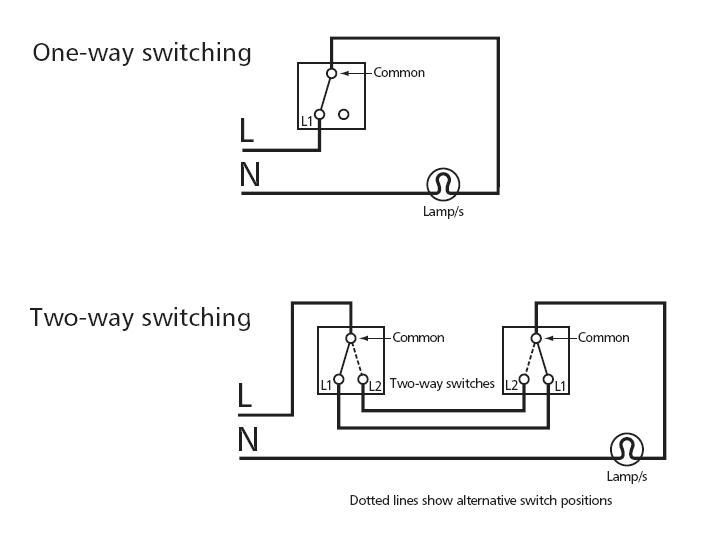- Joined
- 21 Dec 2009
- Messages
- 22
- Reaction score
- 0
- Country

I was recently changing the switch plates in my brother's house, when I discovered a strange setup with the landing light and I was wondering if anyone could shed some light on how it works.
The light on the top of the stairs in controlled by either a switch at the top of the stairs or the switch at the bottom of the stairs. The switch at the top of the stairs includes 3 wires (2 red, 1 black), were 1 of the red wires seems to be in it's own sleeve and the other 2 wires (1 red and 1 black) are sleeved together.
The switch at the bottom of the stairs has 2 wires (1 red, 1 black) in the same sleeve. However the red wire is connected into 2 terminals (i.e. the end of the red wire is connected into a terminal and the same wire has a section of sleeve remove to allow it to connect to another terminal). This setup, with the switch at the bottom of the stairs, is something that I have not seen and discovered through browsing the internet.
As you may have gathered I am not an electrician, but I am interested in how this particular setup works. Apologies if this is not enough information, but I cannot remember the actual wire-to-terminal setup.
The light on the top of the stairs in controlled by either a switch at the top of the stairs or the switch at the bottom of the stairs. The switch at the top of the stairs includes 3 wires (2 red, 1 black), were 1 of the red wires seems to be in it's own sleeve and the other 2 wires (1 red and 1 black) are sleeved together.
The switch at the bottom of the stairs has 2 wires (1 red, 1 black) in the same sleeve. However the red wire is connected into 2 terminals (i.e. the end of the red wire is connected into a terminal and the same wire has a section of sleeve remove to allow it to connect to another terminal). This setup, with the switch at the bottom of the stairs, is something that I have not seen and discovered through browsing the internet.
As you may have gathered I am not an electrician, but I am interested in how this particular setup works. Apologies if this is not enough information, but I cannot remember the actual wire-to-terminal setup.



